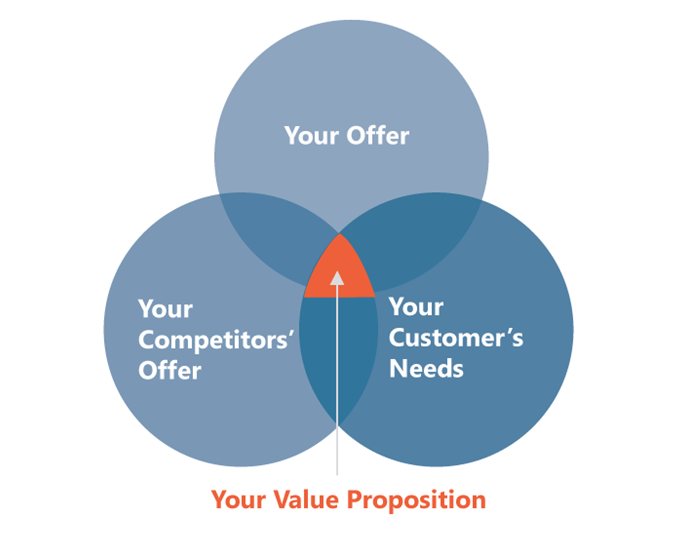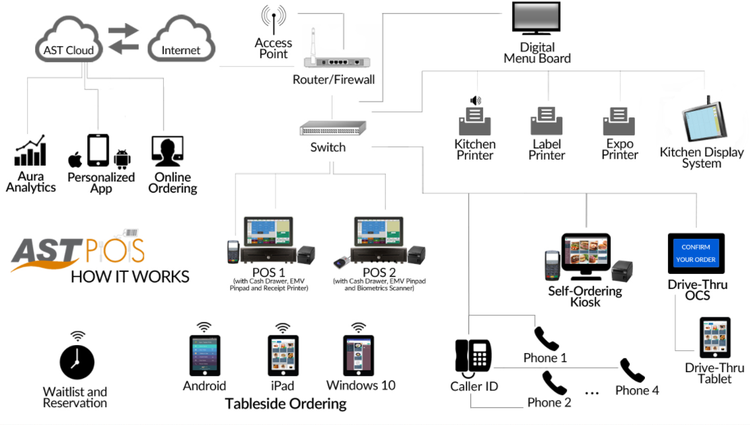How to Create a Scalable Restaurant Business Model
Many restaurant business models don't have much leeway when it comes to scalability. You either go all-in with a significant investment, or you don't. However, the pandemic has led many business owners to consider alternative ways to scale their restaurant so it's sustainable for the future.
Explore ways to incorporate best practices when selecting a business model for your restaurant.
Overview: What is a restaurant business model?
A restaurant business model defines your service style, menu offerings, and value proposition. While planning your business, you'll further define your restaurant’s financial model by uncovering all possible expenses and defining your pricing.
The main types of restaurant models include:
- Fast food: The fast-food business model, also called quick-serve restaurants (QSR), provides convenient menu items and lower prices without table service.
- Fast-casual: With a fast-casual or quick-casual business model, restaurateurs upgrade to higher-quality food ingredients while still delivering quicker service than traditional models.
- Family-style: Also called casual dining, family-style restaurants offer table service and affordable meal options.
- Fine dining: Fine-dining concepts deliver high-quality food, top-notch table service, and an ambient dining experience.
- Pop-up: The pop-up restaurant model uses temporary spaces to cook and serve food, such as another restaurant, chef's homes, or even a park.
- Ghost kitchen: With a virtual kitchen, business owners only provide delivery and carryout options with no on-site dining.
- Cafe or bistro: Small restaurants may focus on beverages or short snackable meals inside a smaller building.
- Buffet: A buffet-based restaurant allows the customer to serve themselves from various food choices, with pricing set as all you can eat or by weight.
What should be included in your restaurant's business model?
The ideal models start with the most profitable restaurant concepts. But figuring out which idea to select can be challenging. Your planning should look for models that provide strong profit margins, low staffing costs, and high cash margins.
This may sound like a unicorn for those in the restaurant industry. However, with proper planning, it's possible to avoid some of the reasons why restaurants fail. Ensure profitability by including these elements in your restaurant model.
Value proposition
Your business model must define how your company stands out from the competition. A value proposition describes what makes your restaurant different.
It may be a unique restaurant concept, like one that offers ready-to-heat options or provides an unforgettable experience. Brainstorm your idea by:
- Exploring the benefits of eating at your restaurant
- Defining why these benefits are valuable to your guests
- Establishing your guest's primary dining problem
- Explaining how your value solves customer issues
- Describing what makes you different from competitors

Create your value proposition by finding the sweet spot where your offer, your competitors’ offer, and customers’ needs intersect. Image source: Author
Revenue sources
The days of supporting your business only on dine-in customers are gone. It may be temporary, or we may be experiencing a shift toward more delivery and carry-out orders.
Since financial problems are the main reason restaurants fail, your restaurant business proposal should explore all possible income streams. Explore restaurant products and services such as:
- In-house dining meals
- Delivery
- Carryout
- Ready-to-heat meal kits
- Do-it-yourself meal options
- Subscription delivery meal kits
- Grocery store items
- Catering for business and personal events
- In-house beverages
- Batched cocktails or mocktails to go
- Gift cards
- Swag, such as shirts, hats, and koozies
- Cookbooks
- Events, such as chef demonstrations
Target market
Knowing your target market is crucial to making sure your restaurant marketing and concept hit the mark. After all, not everyone in town is your ideal restaurant guest. Think about the exact customers you'd like to attract.
Narrow your audience down by reviewing:
- Psychographics: Find out what makes your ideal guest tick, such as their lifestyle, values, and priorities in life.
- Demographics: Discover what type of people will visit your business by digging into their income and education levels, age, gender identity, and location.
- Behavior: Consider your guests’ buying and spending habits, such as what they do for fun online and offline.
Expenses
Your financial projections should show every expense. It's imperative to walk through each revenue stream and list costs. For example, you won't spend much on labor when you sell cookbooks or gift cards, but you'll need financial resources to print, purchase, and track cookbook or gift card sales.
Go through each of your expenses and various situations to determine variable and fixed costs. Ordinary restaurant expenses include:
- Restaurant payroll
- Rent or mortgage bills
- Property, sales, and payroll taxes
- Utilities
- Food and beverage costs
- Equipment purchase and maintenance
- Marketing and public relations
- Franchise costs
- Third-party costs, such as delivery services
Service style
Your restaurant's customer service is vital to your business model. Even companies with a contactless concept, like a ghost kitchen, need to decide how they'll approach customer service. Methods vary according to your concept, restaurant layout, target market, and location.
Popular service styles include:
- Table service: Commonly used in full-service restaurants where food is served to guests at a table.
- Family-style service: Popular in family vacation spots, family-style service includes platters of food so guests can help themselves.
- French service: Used in fine-dining establishments, specific rules apply, such as serving beverages from the right side of the guest.
- Self-service: These options include buffet-style dining and grab-and-go concepts with limited restaurant customer service.
- Single-point service: Automats and fast-food business models feature a single point where guests interact with your service or products.
3 best practices for creating a restaurant business model
During your research, you should uncover potential restaurant business challenges. Doing so helps you explore gaps in your business model and find the best ways to reach your target audience.
1. Focus on sustainability and scalability
Restaurants are having rocky times. Although some business owners experienced downturns before during recessions or local emergencies, the current events are unlike what most entrepreneurs have experienced.
During each step of your small restaurant business planning, you should aim to build both scalability and sustainability into your model. Do this by:
- Weighing the costs and profits for each income stream
- Predicting if you can stay in business if you lose an area of revenue
- Identifying your break-even point after startup
- Creating a contingency plan for emergencies
2. Plan your technology investments wisely
Depending on your restaurant business model, several types of restaurant software can benefit your business. However, you may not need to purchase if you can't afford to buy all of your systems upfront.
First, determine what you consider must-have tools. For instance, you'll need to create a restaurant website and handle sales via your point-of-sale (POS) system. You may also benefit from accounting, payroll, and employee scheduling software.
But, if money is tight, start with the basics and plan for the future. Do this by investing in a restaurant management system that plays well with other technologies, meaning you can add software later and be assured it works with your POS system, thereby resulting in less administrative work.

Your POS system integrates with various devices and ordering systems to keep operations running smoothly. Image source: Author
3. Prepare for every possibility
Entering into a business is risky, especially in a volatile economy. Do your due diligence by examining the practicability of your model using a restaurant feasibility study. Once you've determined your concept will work, start working on a business plan that details your:
- Organizational structure
- External services
- Financial projections
- Marketing strategy
- Employment needs
- Menu
- Competitors
- Target market
- Restaurant location and design
Create a restaurant business model that works
Although starting a new company is risky, you can uncover a scalable restaurant business model with thorough planning. Create a core strategy that explains what you'll sell and how you'll sell it while defining what makes your business unique.
Alert: our top-rated cash back card now has 0% intro APR until 2025
This credit card is not just good – it’s so exceptional that our experts use it personally. It features a lengthy 0% intro APR period, a cash back rate of up to 5%, and all somehow for no annual fee! Click here to read our full review for free and apply in just 2 minutes.
Our Research Expert
We're firm believers in the Golden Rule, which is why editorial opinions are ours alone and have not been previously reviewed, approved, or endorsed by included advertisers. The Ascent, a Motley Fool service, does not cover all offers on the market. The Ascent has a dedicated team of editors and analysts focused on personal finance, and they follow the same set of publishing standards and editorial integrity while maintaining professional separation from the analysts and editors on other Motley Fool brands.
Related Articles
View All Articles